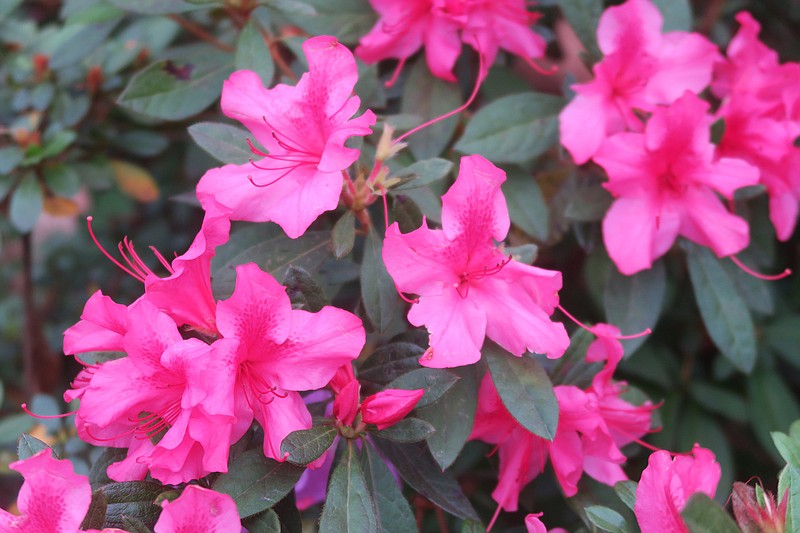Q: I think I saw in a newspaper column that it was OK to trim back azaleas now after they bloom. Is this correct?
A: Yes. If your azaleas need to be pruned, do so as soon after flowering as possible, but no later than mid-June. This allows them ample recovery time before setting flower buds for next year.
■ ■ ■
Q: I've been vegetable gardening for over 50 years, and I can basically grow tomatoes in my sleep. However, a disease of some type has attacked my tomatoes in the past week, and it is the fastest spreading disease I have ever seen. Attached are two pictures. It looks a little similar to the black spot that sometimes appears on our roses from time to time. We live in Rogers and had over 12 inches of rain the week before last. Not sure if that is related or not. Can you please help me identify what it is, how to treat, etc.? Do I need to just uproot and remove the affected ones so it doesn't spread to the other plants?
A: I think your tomatoes have a disease called Septoria leaf spot. It is a very common tomato disease, particularly in our state with its high humidity and warm weather. Septoria also can reappear annually if you replant in the same spot, because the fungus will overwinter on infected tomato debris and weeds — even on tomato cages or stakes. Water is needed to spread the spores, so it is not surprising that you saw it after the heavy rains. Gardeners working with wet plants and insects traveling through wet foliage infected with Septoria leaf spot can also spread the disease.
There are many fungicides that can help some; a few common names include Daconil, Bravo, Mancozeb. Look for home vegetable fungicide spray. Always read and follow the label directions, particularly the waiting period between spraying and harvesting. Once the disease starts, it is hard to control it. Fungicides can help protect plants nearby that don't have it yet. It starts at the bottom and works its way up but does not affect the fruit.
You could still get a harvest (perhaps not as large) before the plants have to be pulled for lack of leaves. Practice good sanitation; mulch the plants to keep water from splashing soil into the leaves and stems; water early in the day so the foliage can dry; and do practice crop rotation, changing where you plant your tomatoes each season.
Q: I have a Japanese maple in my front yard that since 2019 has really deteriorated, and it looks like part of it is dead to me. It has a few leaves on part of the limbs, but mostly they are bare. In 2019 it was beautiful, fully colored. It is the most beautiful in the fall, but in the spring it at least has leaves. I think the cold winter of 2020 did some damage. What should I do maybe to revive it? I use a lawn service for the lawn and have not done their tree and shrub treatment in several years. Do you think that would help? I would appreciate any information or advice you might have.
A: We have seen a lot of damaged Japanese maples the past few years. Our erratic winters have not been kind to these trees. Once a tree begins to decline, there is often little we can do to reverse it. I would cut out all the dead limbs, lightly fertilize the tree and keep it watered well all summer. Then assess the tree this fall and again next spring. If you don't see much new growth or signs of improvement, it might be time to plant a new tree.
■ ■ ■
Q: I recently read your response about killing poison ivy, specifically to treat the cut edge with Roundup or glyphosate. "Poison ivy seems to be coming up everywhere this year, but that is nothing new. If you can wear protective gloves and pull it out from the roots, that can help. Or you can cut it and treat the cut edge with glyphosate (Roundup) taking care not to get any drift onto the camellias. It is a woody weed and pretty tenacious, so don't think one treatment will do the job. Monitor it and stay after it." So, the glyphosate won't harm my gardenias, since they are woody?
A: Glyphosate will harm the gardenia — only put the herbicide on the weed, avoiding any contact with the gardenias or any other desirable plants.
Retired after 38 years with the University of Arkansas Cooperative Extension Service, Janet Carson ranks among Arkansas' best known horticulture experts. Her blog is at arkansasonline.com/planitjanet. Write to her at P.O. Box 2221, Little Rock, AR 72203 or email [email protected]

